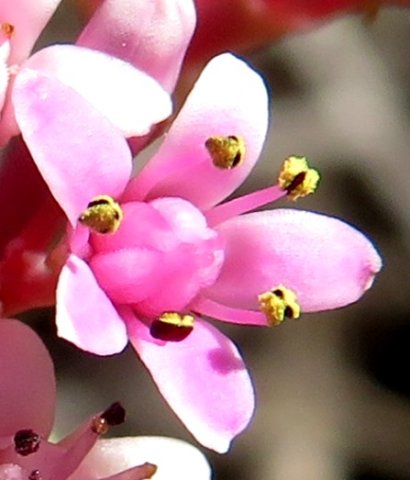Crassula rupestris flower

A Crassula rupestris flower is nearly white in bright light, pale pink in parts depending on light and shade.
An ovary is called superior when petals and stamens emerge from below it, as is the case here. But there is a set of them here, not just one. The free carpels, separate ovaries, each with its own style and stigma on top, cohere in a ring in the corolla base. They display what looks like vertical fluting where their white to pink bodies meet. The stigmas are the erect, short columnar growths, still underdeveloped and not yet ready for accepting pollen. The five stamens are positioned in a ring where the petals meet, opposite the grooves between the carpels.
Self-pollination is avoided in Crassula plants. This is achieved by the stigmas only becoming functional, meaning pollen-receptive once the flower’s own yellow anthers have spent their pollen. Spending means it has all been conveyed to other flowers, lost and wasted somehow, or eaten by hungry helpers. Eating of the pollen by visiting pollinators is not wasting it, as serving the pollinators is part of the plan. To cater for all eventualities surplus pollen is produced to ensure enough for procreation.
The petal tips, rounded to obtusely pointed, curve outwards just enough to guarantee comfortable landings for airborne guests. Any architect would be proud to call this his or her design.

